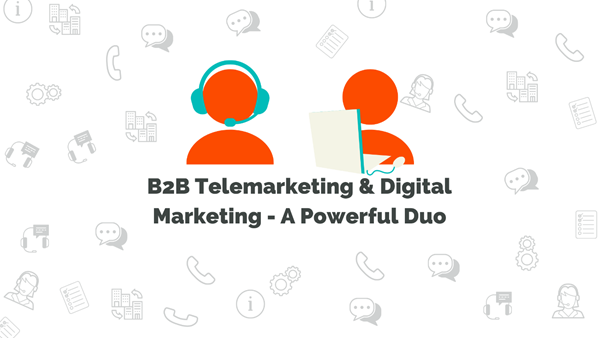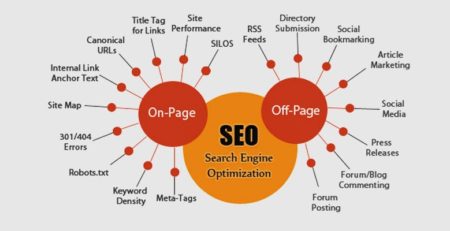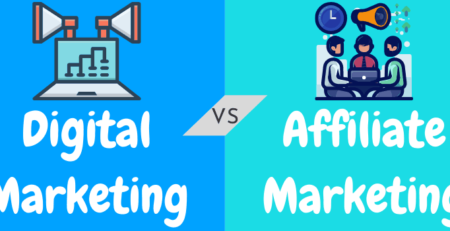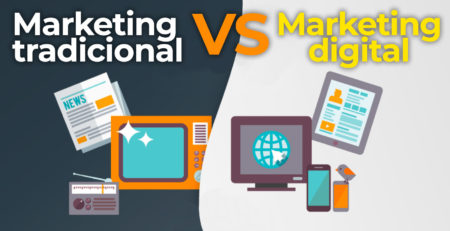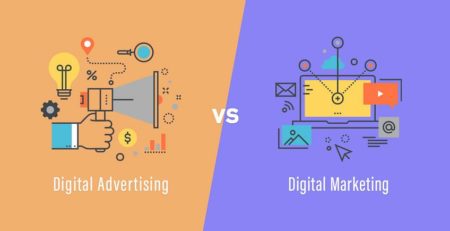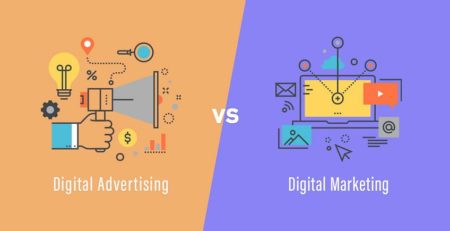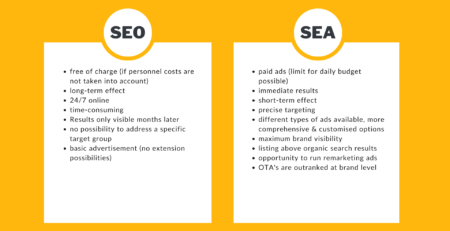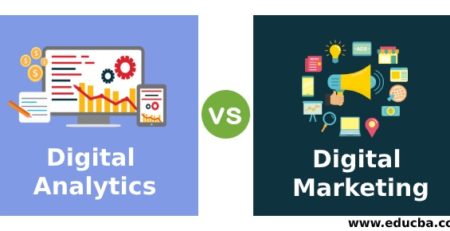Telemarketing Vs Digital Marketing: Get To Know Which Is Right For You?
In today’s digital age, businesses have more marketing options than ever before. But which is more effective: Telemarketing or Digital Marketing? Let’s dive in and compare these two strategies.
Telemarketing, the art of making sales calls to potential customers, has been around for decades. It’s a direct, person-to-person approach that allows companies to reach out and engage with their target audience. But is it still as effective as it once was?
On the other hand, we have Digital Marketing, a modern and ever-evolving means of promoting products and services online. With social media, email marketing, and search engine optimization, businesses can connect with their customers in a virtual realm. But how does it stack up against the more traditional telemarketing approach?
Join us as we explore the pros and cons of Telemarketing and Digital Marketing and uncover which strategy may be the best fit for your business. Let the battle begin!
| Telemarketing | Digital Marketing |
| 1. Interpersonal communication | 1. Targeted online advertising |
| 2. Phone calls and direct mail | 2. Website optimization and SEO |
| 3. Traditional marketing channel | 3. Online presence and social media |
| 4. Personalized approach | 4. Data-driven campaigns |
| 5. Limited reach | 5. Global audience potential |
Key Takeaways: Telemarketing Vs Digital Marketing
- Telemarketing involves making phone calls to promote products or services.
- Digital marketing uses online platforms to reach and engage with potential customers.
- Telemarketing is more personal and direct, while digital marketing offers wider reach.
- Digital marketing allows for targeting specific audiences based on demographics and interests.
- Both telemarketing and digital marketing can be effective, depending on the target audience and goals.
Comparing Telemarketing Vs Digital Marketing
Telemarketing and digital marketing are two distinct methods that businesses use to reach and engage with their target audience. In this article, we will delve into the differences between telemarketing and digital marketing, exploring their key features, user experiences, pros and cons, price points, and more. By understanding the nuances of each approach, businesses can make informed decisions about which strategy aligns best with their goals and target audience.
Overview of Telemarketing
Telemarketing is a form of marketing that involves contacting potential customers over the phone to promote products or services. It has been a popular marketing method for decades and has traditionally relied on cold calling and scripted sales pitches. Telemarketers often work in call centers and follow a pre-determined list of numbers to dial. They engage with potential customers over the phone, providing information, answering questions, and closing sales.
Overview of Digital Marketing
Digital marketing, on the other hand, encompasses a wide range of marketing activities conducted through digital channels. It leverages the internet and various digital platforms to reach and engage with target audiences. Digital marketing strategies include search engine optimization (SEO), content marketing, social media marketing, email marketing, and more. It focuses on creating valuable content, building online brand presence, and using data-driven techniques to target specific audiences.
Key Features Compared
When comparing telemarketing and digital marketing, there are several key features to consider. Let’s explore these features in detail:
Targeting
Telemarketing allows for more direct targeting as telemarketers engage with potential customers individually over the phone. They can tailor their sales pitches and offers based on the recipient’s response, creating a more personalized experience. Digital marketing, on the other hand, relies on data-driven techniques to target specific audiences. Through audience segmentation and analytics, businesses can deliver targeted ads, emails, and content to reach their ideal customers.
Reach
Telemarketing has a limited reach compared to digital marketing. With telemarketing, businesses can only reach potential customers through phone calls, which entail labor-intensive efforts. Digital marketing, on the other hand, can reach a wide audience through various digital platforms such as search engines, social media, websites, and mobile apps. This wider reach allows businesses to engage with a larger audience and potentially generate more leads and sales.
Cost
Telemarketing can be more costly compared to digital marketing. It requires hiring and training telemarketers, setting up call centers, and investing in phone systems. The costs associated with telemarketing campaigns can quickly add up, especially when targeting large audiences. Digital marketing, on the other hand, provides more cost-effective options. Businesses can choose to allocate their budget towards specific digital channels, and the costs are often based on performance metrics such as clicks or impressions.
Measurement and Analytics
Digital marketing offers robust measurement and analytics capabilities compared to telemarketing. With digital marketing, businesses can track and measure the performance of their campaigns in real-time. They can monitor metrics such as website traffic, conversion rates, email open rates, and social media engagement. These insights help businesses optimize their strategies, make data-driven decisions, and understand the return on investment (ROI) of their marketing efforts. Telemarketing, although some data can be collected, does not provide the same level of detailed analytics.
User Experience
When it comes to user experience, digital marketing often provides a more convenient and less intrusive experience for consumers. With digital marketing, consumers can choose to engage with content or ads at their convenience, and they have control over their privacy settings. Telemarketing, on the other hand, can be seen as intrusive as it often interrupts people’s day with unsolicited phone calls. It can lead to frustration and negative experiences if not executed properly.
Pros and Cons
Telemarketing Pros:
– Personalized communication: Telemarketing allows for direct, one-on-one communication with potential customers, enabling personalized sales pitches and offers.
– Immediate responses: Telemarketers can gauge a prospect’s interest and address concerns in real-time, potentially closing sales on the spot.
– High engagement: Personalized phone calls can lead to higher engagement and a more memorable experience for potential customers.
Telemarketing Cons:
– Intrusion: Telemarketing can be seen as invasive and interruptive, resulting in negative brand experiences if not executed properly.
– Limited reach: Telemarketing has a limited reach compared to digital marketing, as it only targets those who are reachable by phone.
– Compliance challenges: Telemarketing campaigns must adhere to strict regulations and comply with do-not-call lists, which can add complexity and restrictions.
Digital Marketing Pros:
– Wide reach: Digital marketing has the potential to reach a large audience through various digital platforms, expanding brand visibility and potential customer base.
– Targeted advertising: Digital marketing allows for precise audience targeting, ensuring that ads and content are delivered to the most relevant prospects.
– Measurable results: Digital marketing provides comprehensive analytics and measurement tools to track the performance of campaigns and optimize strategies.
Digital Marketing Cons:
– Learning curve: Digital marketing requires expertise in various platforms and strategies, which can be overwhelming for businesses without prior experience in the digital realm.
– Saturation: The digital landscape is highly competitive, making it challenging for businesses to stand out and capture the attention of their target audience.
– Ad blocking and saturation: Consumers can easily ignore or block digital ads, reducing their effectiveness and reach.
Price Comparison
When it comes to pricing, telemarketing campaigns often involve more upfront costs. Setting up a call center, hiring and training telemarketers, and investing in phone systems can be expensive. Additionally, telemarketing campaigns typically require ongoing expenses such as phone bills and maintenance.
Digital marketing, on the other hand, offers more flexibility and scalability. Businesses can start with small budgets and gradually increase their investment as they see results. The costs of digital marketing can vary depending on the channels used, the level of competition, and the desired reach. However, digital marketing generally offers more cost-effective options, especially for small and medium-sized businesses.
Comparison Table
Feature Telemarketing Digital Marketing
Targeting Direct targeting through phone calls Data-driven targeting based on audience segmentation and analytics
Reach Limited reach through phone calls Wider reach through various digital platforms
Cost Higher upfront costs and ongoing expenses Costs vary depending on channels used and overall budget
Measurement and Analytics Limited analytics capabilities Comprehensive real-time measurement and analytics
User Experience Can be seen as intrusive and interruptive Convenient and less intrusive, allowing consumers to engage at their convenience
Which is Better: Telemarketing vs. Digital Marketing
Based on the comparisons above, it is clear that digital marketing offers more advantages and flexibility compared to telemarketing. While telemarketing can provide direct and personalized communication, it falls short in terms of reach, analytics, and user experience. Digital marketing, on the other hand, allows businesses to target a wider audience, convey targeted messages, measure campaign performance, and provide a more convenient user experience.
In summary, digital marketing is the preferred choice in today’s digital age. Its wide reach, precise targeting, analytic capabilities, and cost-effective options make it an essential tool for businesses to effectively engage with their target audience and drive results.
Three reasons why digital marketing is the better option:
1. Wide Reach: Digital marketing allows businesses to reach a larger audience through various digital platforms, expanding their brand visibility and potential customer base.
2. Targeted Advertising: Digital marketing enables precise audience targeting, ensuring that ads and content are delivered to the most relevant prospects, increasing the likelihood of conversions.
3. Measurable Results: Digital marketing provides comprehensive analytics and measurement tools, allowing businesses to track campaign performance, optimize strategies, and achieve a higher return on investment (ROI).
By adopting digital marketing strategies, businesses can stay competitive in today’s digital landscape and effectively promote their products or services to a wider audience.
Frequently Asked Questions
Welcome to our FAQ section where we address some common questions about telemarketing and digital marketing. Learn more about the differences between these two marketing approaches and how they can impact your business.
1. How does telemarketing differ from digital marketing?
Telemarketing involves direct communication with potential customers through phone calls. It allows for personal interaction and immediate response. On the other hand, digital marketing refers to promoting products or services through online channels such as websites, social media, and email. It reaches a larger audience and allows for targeted advertising.
While telemarketing relies on direct conversations, digital marketing employs various tactics like social media campaigns, content marketing, and search engine optimization to attract and engage potential customers. The key difference lies in the medium and approach used to reach the target audience.
2. Which marketing approach is more cost-effective for a small business?
Digital marketing is generally more cost-effective for small businesses. Compared to telemarketing, digital marketing provides a wider reach at a lower cost. Small businesses can leverage online platforms and tools to create targeted ads, reach specific demographics, and measure the effectiveness of their campaigns.
Furthermore, digital marketing allows companies to optimize their budget by tracking metrics such as cost per click, conversion rates, and return on investment. This data-driven approach helps small businesses allocate their limited resources more efficiently, maximizing their marketing efforts.
3. Does telemarketing or digital marketing offer better customer engagement?
While both telemarketing and digital marketing have their advantages, digital marketing often offers better customer engagement. The interconnected nature of the internet and social media platforms allows businesses to interact with customers in real-time and on a larger scale.
Digital marketing offers various avenues for engagement, such as comments, likes, shares, and direct messaging. It enables businesses to build relationships with their target audience through personalized content, interactive elements, and timely responses. Telemarketing, on the other hand, provides a more immediate and personal form of engagement but may not reach as wide an audience.
4. Which marketing approach provides better targeting capabilities?
Digital marketing provides better targeting capabilities compared to telemarketing. With digital marketing, businesses can use data analytics to understand their target audience’s demographics, behavior, and preferences. This allows for more precise targeting and the delivery of personalized content to specific customer segments.
By utilizing tools like website analytics and social media insights, businesses can gather valuable information about their customers and optimize their marketing strategies accordingly. Telemarketing, although it involves direct communication, may not have the same level of data-driven targeting as digital marketing.
5. Is it possible to integrate telemarketing with digital marketing?
Absolutely! Integrating telemarketing with digital marketing can create a powerful marketing strategy. By combining the personal touch of telemarketing with the wide reach of digital marketing, businesses can effectively engage with their target audience at different stages of the customer journey.
For example, businesses can use digital marketing to generate leads and then utilize telemarketing to follow up with those leads, addressing any questions or concerns directly. The synergy between the two approaches can help build trust, establish relationships, and ultimately, drive conversions.
Digital Marketing vs Traditional Marketing | digiBigs

Summary
In this article, we explored the differences between telemarketing and digital marketing. Telemarketing involves calling people on the phone to promote products or services, while digital marketing uses online platforms like websites and social media to reach customers.
We learned that digital marketing offers many advantages over telemarketing. With digital marketing, businesses can reach a wider audience, track their marketing efforts, and engage with customers in a more personal way. On the other hand, telemarketing can sometimes be intrusive and annoying to people.
Digital marketing also allows businesses to target specific groups of people based on their interests and demographics. This targeted approach helps to ensure that marketing messages are reaching the right people at the right time. Telemarketing, on the other hand, often targets a large number of people indiscriminately.
In conclusion, while both telemarketing and digital marketing have their pros and cons, digital marketing seems to be the more effective and efficient option in today’s digital age. It allows businesses to connect with customers in a meaningful way while reaching a larger audience. So, if you are a business looking to market your products or services, consider exploring the world of digital marketing for better results.

